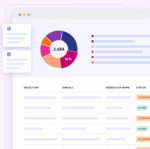
Technology advances, over the past decade, have emboldened us to take on projects and processes that would normally seem way beyond the scope of our skill sets. We are now equipped with digitized tools that enable us to fulfill many of our DIY desires. The drive to possess autonomy, self-sufficiency, greater productivity and customization in our home and work life has led to digital transformations that are shaping our corporate environments.
Neutralizing cloud orchestration language barriers
Cloud application deployments have required specialized language or programming code, utilized by trained software developers. In the same manner that a trained architect or engineer drafts and interprets the blueprints for a building project, app developers use a special language to develop useful and complex applications. Cloud orchestration is now enabling the democratization of technology by empowering non-technical business users with the ability to become the architects of their own customized apps, without knowing specialized language or code. This ability diffuses many of the challenges of relying solely upon a technical staff to create specific and fluid apps and workflows for each department and user.
So, what is ‘cloud orchestration’, and how is it a game-changer? Orchestration within the cloud uses configuration files and code to develop and manage core infrastructure and workflows across the cloud environment. In a very basic sense, it is gathering and tying together disparate and independent processes into a unified workflow for more efficient management of critical functions. Most IT departments manage a staggering number of app deployments and secure workflows. Translate that to time, money, and possibly, burn out. What if you could have an intuitive automation platform that empowers non-coders with low code/no code capabilities, to become their own ‘citizen developers’? Well, that is the reality of the democratized orchestration cloud.
Orchestration within the cloud has removed language barriers to allow users to take some personal and creative control over the outcomes of app development. By de-mystifying the language of app development, corporations can free their app development teams to concentrate on more complex projects, leaving the basics to non-technical users in HR, finance, sales, etc. Employees of any department can custom create apps via a natural language processing driven set of preconfigured elements, using AI tools and intuitive workflows. This common, familiar and comfortable exchange between human and machine allows anyone to discern the process and use the tools.
Low-code and no-code cloud orchestration is a win-win for business users and tech professionals
The benefits are numerous, solving many of the most common pain points:
- Non-developers can customize/create apps without waiting for programmer intervention
- Dynamically adapts IT infrastructure to changing operational demands
- Extends legacy IT with cloud-native architectures
- Unites disconnected systems and disparate data across the enterprise
- Enables more flexible and dynamic solutions
- Empowers self-sufficiency and autonomy from IT dependence
- Lowers production costs
- Frees development staff for more complex projects
- Meets regulatory compliance without incurring additional technical resources
- Platform agnostic deployment (i.e., AWS, Azure, Google Cloud, etc.)
Accessible app development for everyone
Gartner predicts that by 2024, low-code application development will be responsible for more than 65% of app development enterprise. Further, Gartner projects that these democratized solutions will gain momentum and strength, unleashing the ‘citizen application developer’ movement empowered by AI-driven tools, to account for at least 40% of projects by 2022.
In this present age of tumultuous change and transformation, we can appreciate on a personal and corporate level, the importance of solutions that increase technology accessibility to everyone. Anything that enhances self-sufficiency and self-direction is a business advantage.






